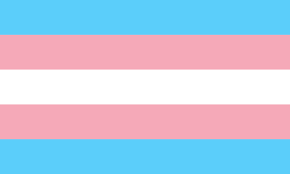Transgender Day of Visibility (31 March)
‘Transgender’ refers to any person whose gender identity does not match their sex at birth. As well as the transgender umbrella also represents transgender, non-binary, genderfluid, genderqueer and agender people.
What is TDoV?
Transgender Day of Visibility (TDoV) is an annual global event celebrated on 31 March to improve the awareness of the discrimination faced by transgender people globally. Transgender Day of Visibility is the counterpart to Transgender Day of Remembrance, held on 20 November, which remembers those murdered due to anti-transgender violence.
Transgender Day of Visibility was founded in 2009 by Rachel Crandall and Chris Edwards after they were unable to find an existing event that focused on trans visibility. In their words, the purpose of Transgender Day of Visibility is "to bring attention to the continued discrimination faced by members of the transgender community" and "showcase positive representations of trans people in the media." In their view, visibility was as critical as remembrance because "visibility leads to increased acceptance."
Why is TDoV Important?
Trans people are disproportionately likely to suffer anti-LGBT violence, hate and discrimination. Indeed, according to Galop (2020), around half (48%) of transgender people report having experienced hate crime or discrimination, while 28% report having lost a job or suffered work-related discrimination due to their gender identity or expression. Transgender employees face discrimination in housing and healthcare and face more difficulty obtaining health insurance than non-transgender people.
Questions to ask
TDoV can be observed and celebrated personally and as an organisation. Awareness and education-focused initiatives are particularly powerful. Consider exploring some of the following:
- Education: Organise a webinar or lunch and learn looking into “Trans and Non-Binary Inclusive Language” (Reach out to LGBT Great for more information)
- Stories: Invite a prominent trans activist, speaker or member of your organisation to participate in a conversation around their lived experience being transgender at work.
- Visibility: Is your organisation shining a light on transgender role models and allies?
- Marketing and Comms: Share and amplify content from trans activists.
- ESG: Work with trans inclusive organisations and charities.
- Data: Capture, monitor and report on diversity data that explicitly covers transgender identities.
A brief timeline of important transgender milestones
- 1951: Roberta Cowell transitions
- 1969: The term “transgender” popularised by Virginia Finch
- 1986: Mark Rees petitions the EU Court of Human Rights
- 1996: First recorded ruling of unfair dismissal from work for a trans person.
- 1999: Transgender Day of Remembrance founded
- 1999: Transgender flag designed by Monica Helms
- 2009: Transgender Day of Visibility founded
- 2010: UK Equality Act protects transgender people
- 2020: US Supreme Court rules that the Civil Rights Act protects trans people
If you would like further information, please get in touch at: info@lgbtgreat.com.


